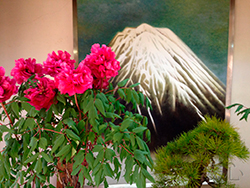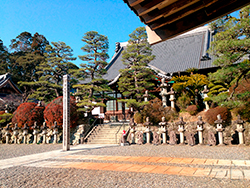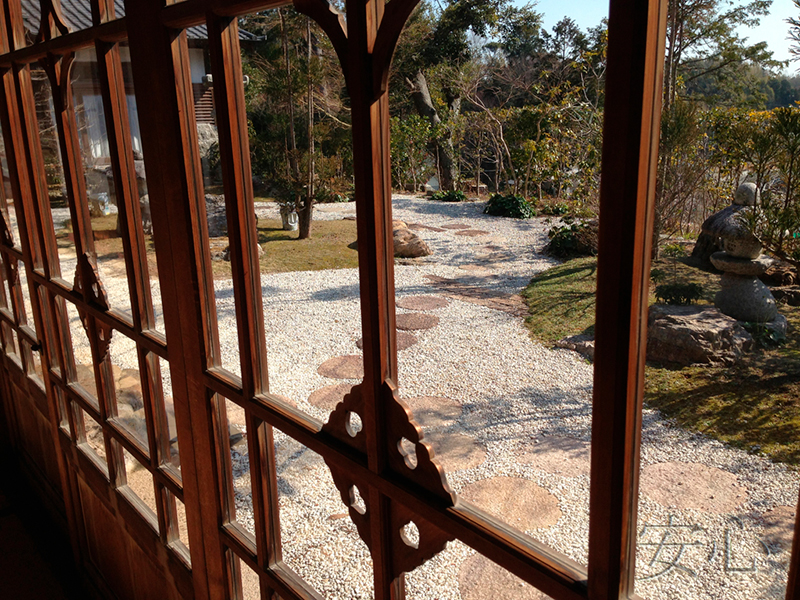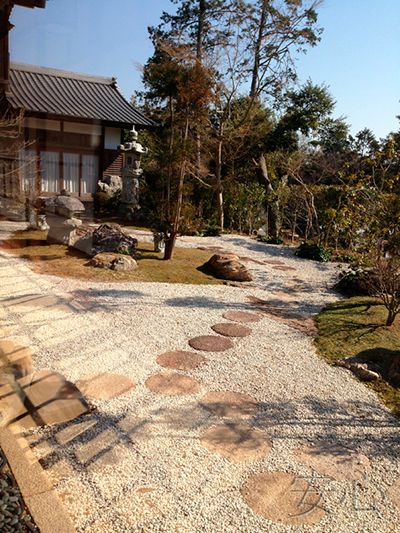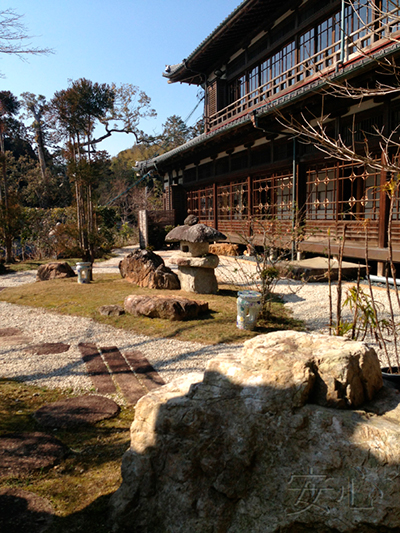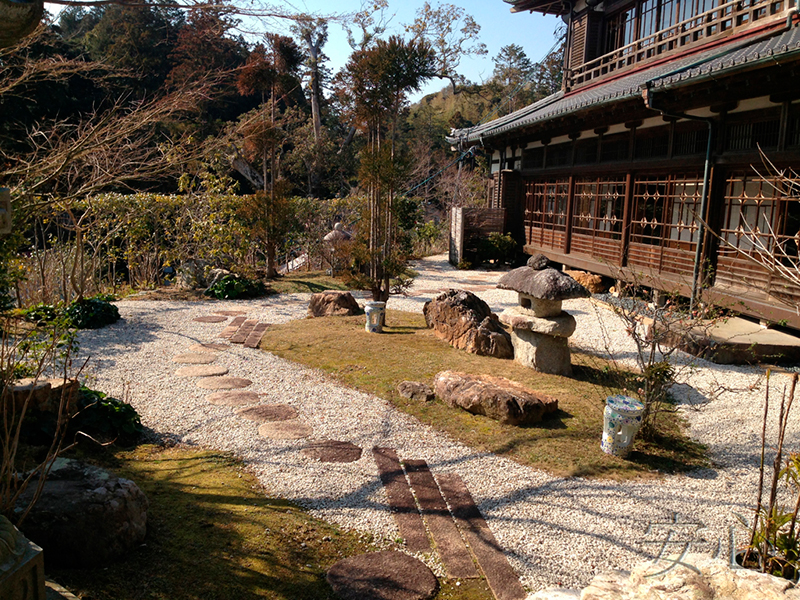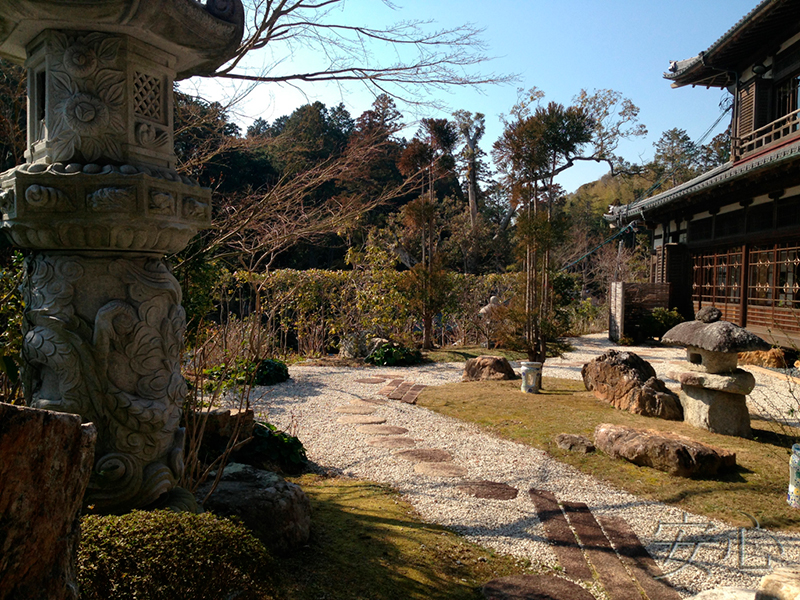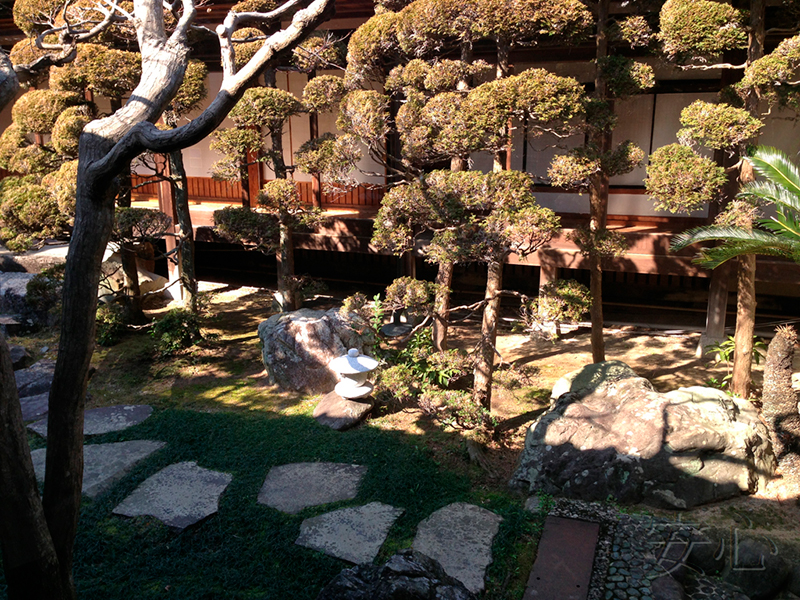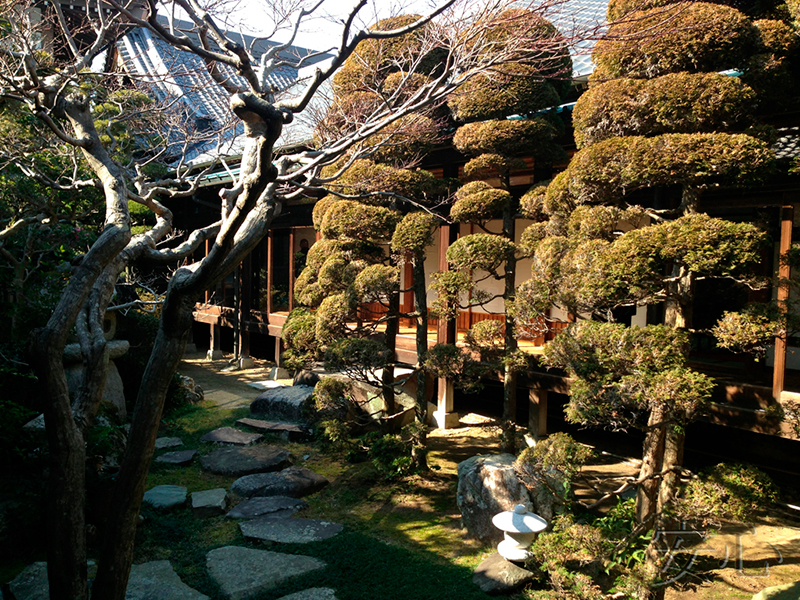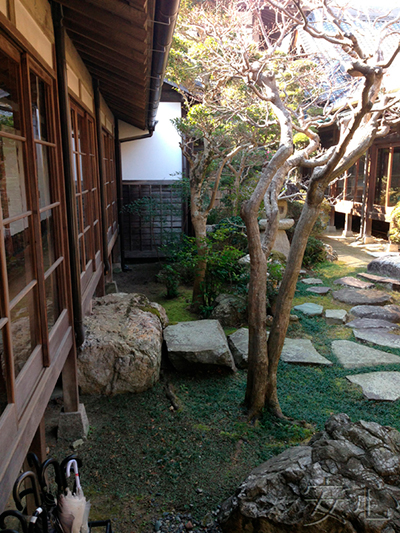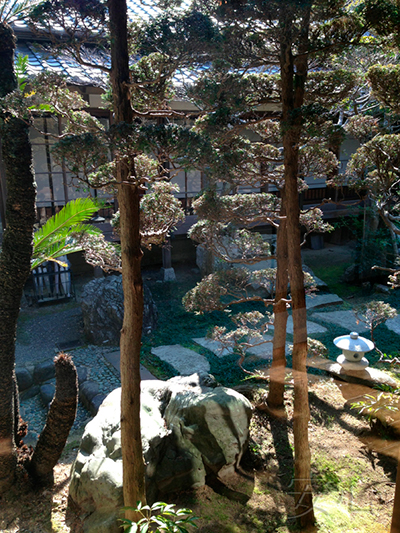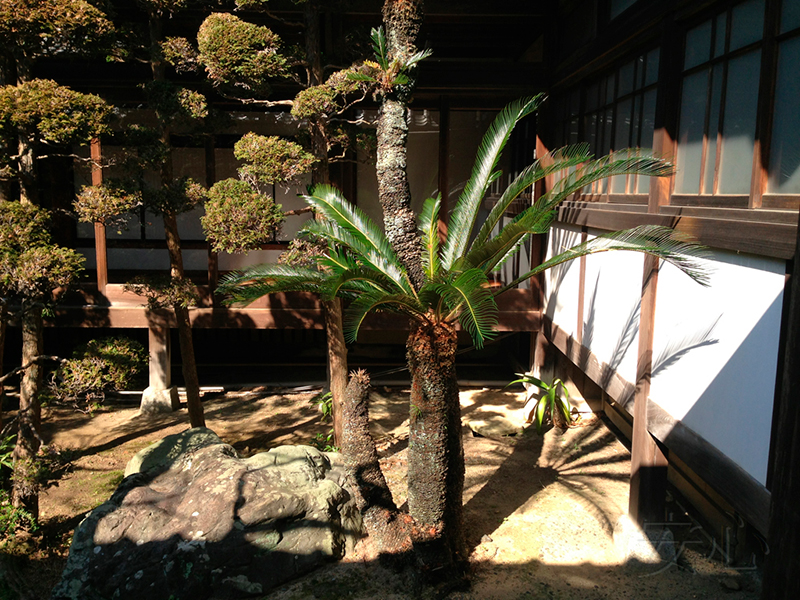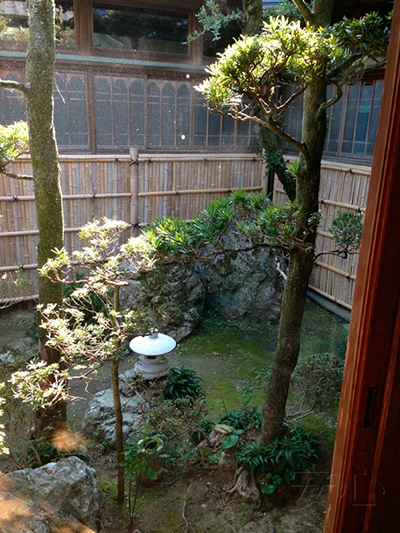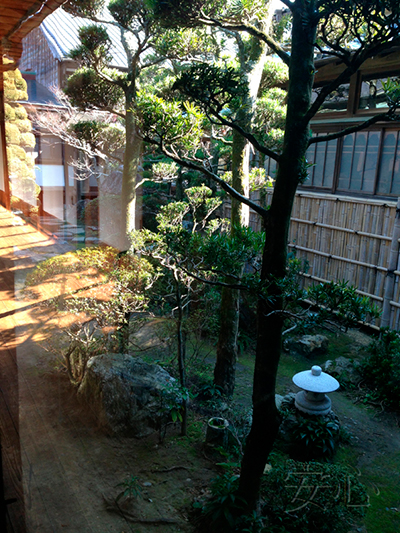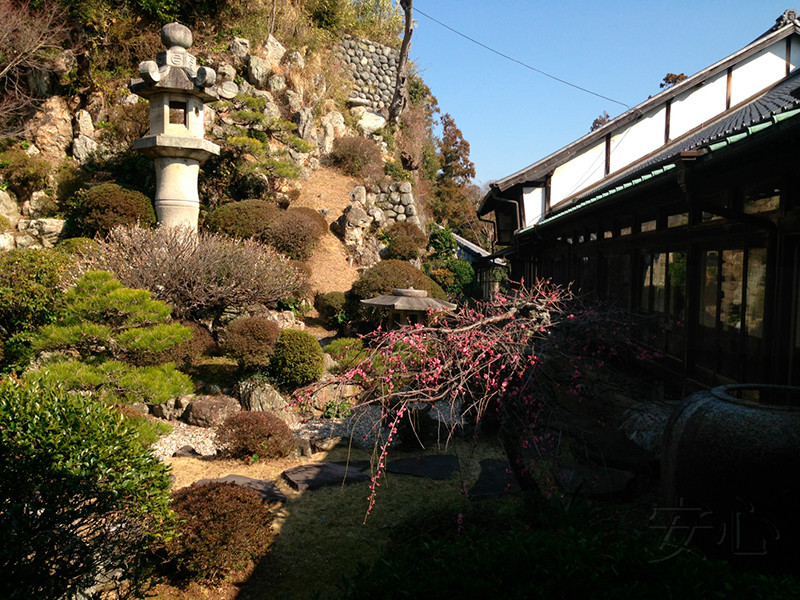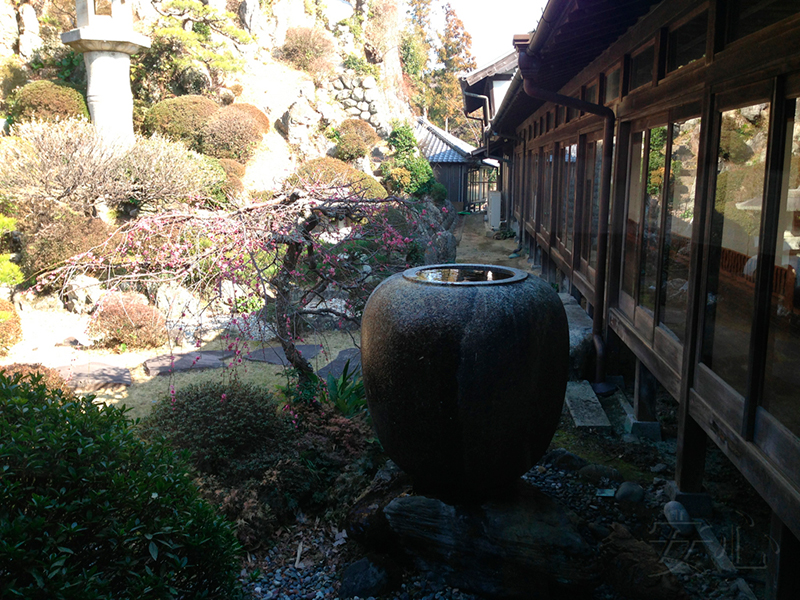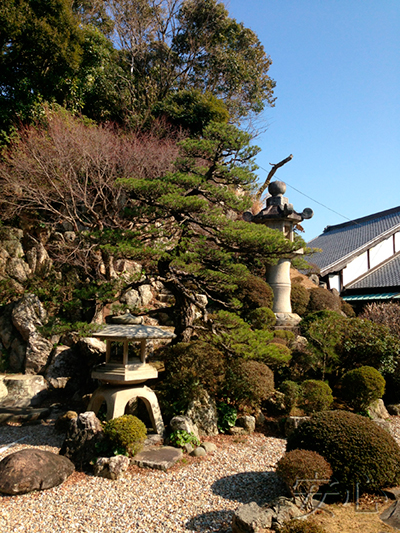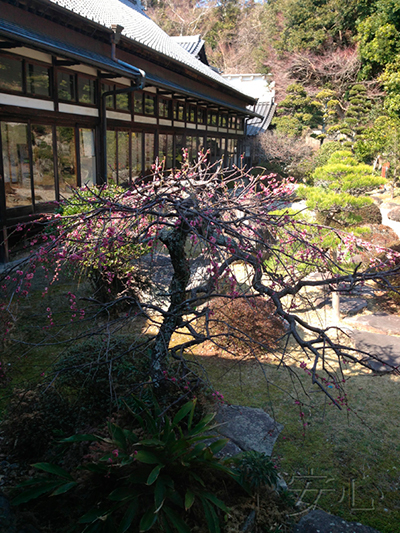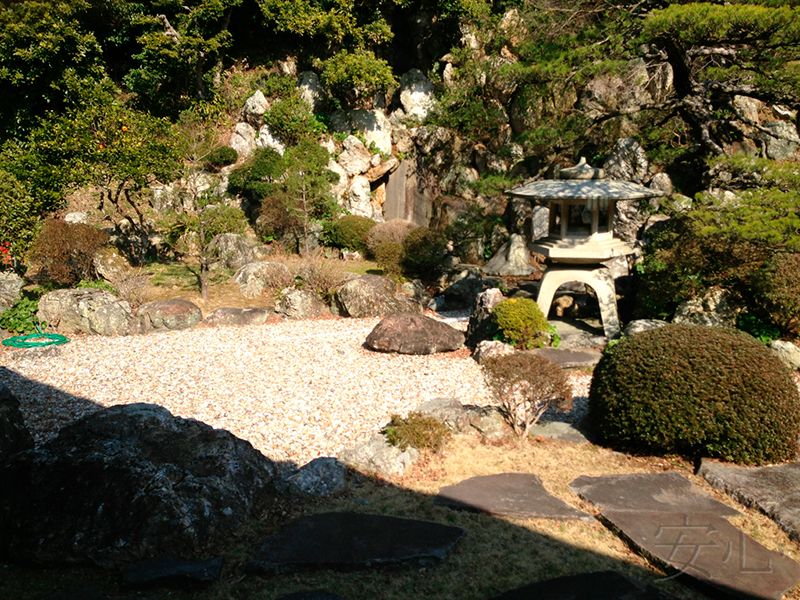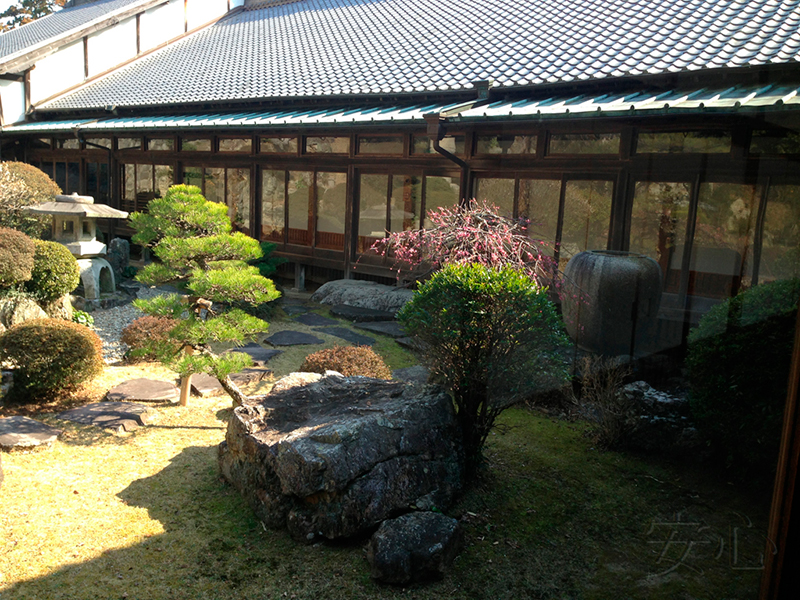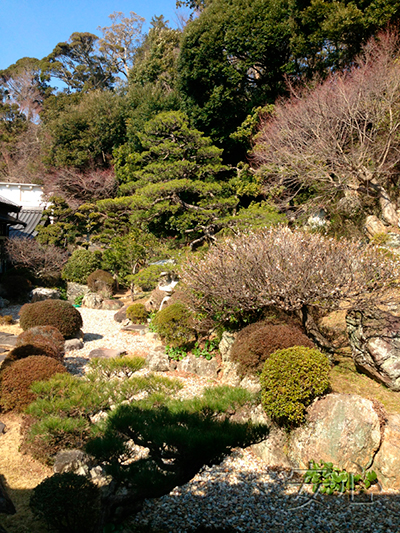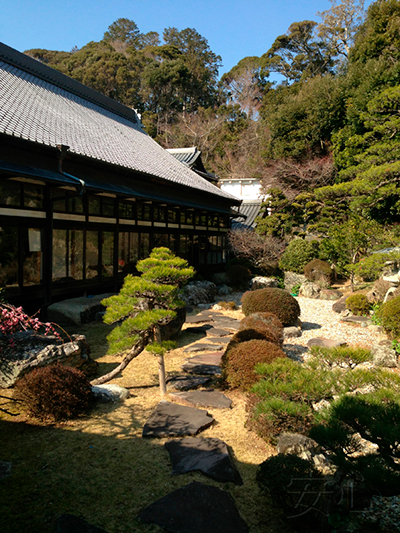
Kasuisai Temple
Kasuisai Temple is located 4 km north of Fukuroi Station. It is one of the most famous temples of Soto Zen Buddhism in the Tokai Area. It is believed that the temple was built in 1394 and it was originally named "Kasuya Ossetia." This name was given by a monk Tozen.
About 600 years ago, in 1401, a temple named УToyokenФ was opened by a priest in Fukuroi. At that time, in Muromachi Era, Ashikaga Shogunate ruled Japan. Soon the power of Ashikaga family began to weaken and internecine wars began all over the country. During the Age of Civil Wars only the most powerful and dignified man could become the absolute monarch of Japan. At that time the 11th priest of Toyoken temple named Senrin Tozen helped to run away to the boy, taken as hostage by the Imagawa family in Suruga. Shortly thereafter the Civil War was ended and Edo Era was established by Tokugawa Ieyasu. He was the very man that the priest had helped.
Now, when Tokugawa Ieyasu became the lord of Hamamatsu Castle, he invited the priest to say thank you. When the priest sat right in front of Ieyasu, and while he was listening to his words, he fell into a nap in spite of himself. Shoguns men got furious about such terrible discourtesy but Ieyasu stoped them and said: УTo sleep is permittedФ, calling at the same time the name "Monk KasuiФ ( Kasui means УYou can sleepФ in Japanese old word ). Since then, the temple Toyoken was also called as Kasuya-sai.
Now, when Tokugawa Ieyasu became the lord of Hamamatsu Castle, he invited the priest to say thank you. When the priest sat right in front of Ieyasu, and while he was listening to his words, he fell into a nap in spite of himself. Shoguns men got furious about such terrible discourtesy but Ieyasu stoped them and said: УTo sleep is permittedФ, calling at the same time the name "Monk KasuiФ ( Kasui means УYou can sleepФ in Japanese old word ). Since then, the temple Toyoken was also called as Kasuya-sai.
The interior of some halls might be mistaken for an art museum. There are many buildings which are paintings of flowers, especially a lot of peonies. Sliding doors and white walls are also often decorated by them. April and May cherries, peonies and azaleas enliven the mood. Many visitors come to enjoy the peony plants of 150 varieties in the Peony Garden, open to the public at this season.
First comes a Hondo main hall. Here you can find the Tokugawa family crests. Actually, it can be found everywhere in the temple! A statue of the Sacred Kannon behind the splendidly ornamented main altar or Shumidan. One of the more famous sights of the Temple are the toilets. Apparently an important part of the training for a Zen monk was to clean to toilets. So they were certainly very clean!
Prevailing pacification here soothes visitors. But the particular interest to us is the little courtyards that we can see as we pass through the halls of the temple. These charming gardens not only create a certain mood, they also highlight the beauty of the buildings. I think many of the ideas quite suitable for our small private gardens.
Courtyards
photo: Alexandra Shurupova
text: Irina Andrianova
anshin©2011All rights reserved. When using the materials of the site, reference is obligatory.
Proposals for co-operation, as well as comments and suggestions on the site please send to the address: anshinsad@gmail.comtel: +7 (965) 121-80-60, 10am-20pm
